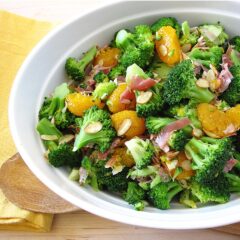 NCNM’s Masters in Nutrition (MScN) program looks at nutrition from a whole-food perspective. As students, we learn both about the food and how to cook with it. Throughout this process, emphasis is placed upon our ability to create or tailor diets to suit any and all dietary restrictions. Many courses in this program involve group cooking classes and it is through them that we first learn to accommodate people’s dietary preferences and restrictions. As you might expect, many of the students this program have food restrictions… as a result, it is a very interesting experience coming up with a meal plan that meets certain nutrition requirements and yet does not leave any classmate out.
NCNM’s Masters in Nutrition (MScN) program looks at nutrition from a whole-food perspective. As students, we learn both about the food and how to cook with it. Throughout this process, emphasis is placed upon our ability to create or tailor diets to suit any and all dietary restrictions. Many courses in this program involve group cooking classes and it is through them that we first learn to accommodate people’s dietary preferences and restrictions. As you might expect, many of the students this program have food restrictions… as a result, it is a very interesting experience coming up with a meal plan that meets certain nutrition requirements and yet does not leave any classmate out.
I took my first MScN course this summer: “Healing Foods.” It was a fascinating overview of all the beneficial components of food, and how to prepare and cook them in order to maximize their health benefits. As part of this course, we had a group cooking class every few weeks.
Now, this is NCNM, where food allergies and dietary preferences are accommodated and supported like no other place I have ever been. And this is the MScN program, where we focus upon supporting health issues through food. Therefore it’s great here if you are one of those unlucky folk with food intolerances… but not so great if you are the one trying to come up with recipes that the entire class can eat!!
But, that’s why we’re in the MScN program in the first place, because for many our future clients will have dietary issues that are not easy to manage. So it’s great to start now and gain experience in making healthy, delicious meals that anyone can eat – or at least knowing what substitutes work and which ones do not!
As delicious as it was to eat a communal meal every other week this summer, it was also entertaining seeing the various alternations different groups came up with to accommodate everyone’s needs, and just how good almost everything tasted!
Some of the dietary restrictions / preferences you are likely to come across in your studies at NCNM include… vegans, vegetarians, celiac, paleo, gluten-free, dairy-free, gluten AND dairy free, gluten and dairy free vegetarians, gluten and dairy free carnivores… and that’s not to mention specific food allergies – milk, eggs, fish, shellfish, tree nuts, peanuts, corn, soy, chicken, potatoes, to name a few; you get the picture. It is complex, exasperating at times… But it’s downright amazing when a highly modified dish comes out tasting, well, great.
The trick is to be adaptable and think outside the box… or perhaps to be more apt, off the shelf.
Some of the successful modifications my class came up with include the following:
- Coconut cream for whipping cream
- Gluten-free flour for regular wheat flour
- Almond flour for gluten-free flour (for those who can’t do gluten or potatoes or corn, which are often in gluten free flours)
- Rice pasta, corn pasta, quinoa pasta, and spaghetti squash or even spiralized steamed vegetables as replacement pasta
- Veganese for mayonnaise
- Cultured soy milk for yogurt or sour cream
Written by Katie DeGroot, Naturopathic Medicine program and Master of Nutrition program